In our DirectAdmin tutorial series, we explain how to upload a website to your VPS. To go through the steps below, we assume that you have completed the tutorial series, or are familiar with the subject matter and have created a database.
In this article, we explain how to install Drupal on a VPS with DirectAdmin. Paid options such as Installatron or Softaculous can simplify the installation and allow you to execute from DirectAdmin with one click. We assume that you do not want to incur additional costs or want to install additional software, and only explain how to install Drupal in DirectAdmin using the built-in options in DirectAdmin itself.
Installing Drupal
Step 1
Download Drupal from the Drupal homepage and save the .zip file to your computer.
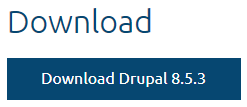
Step 2
Log in to DirectAdmin as the user for which you want to install Drupal and click 'Files'.

Step 3
You now see an overview of the folders and files. Click 'Domains'.
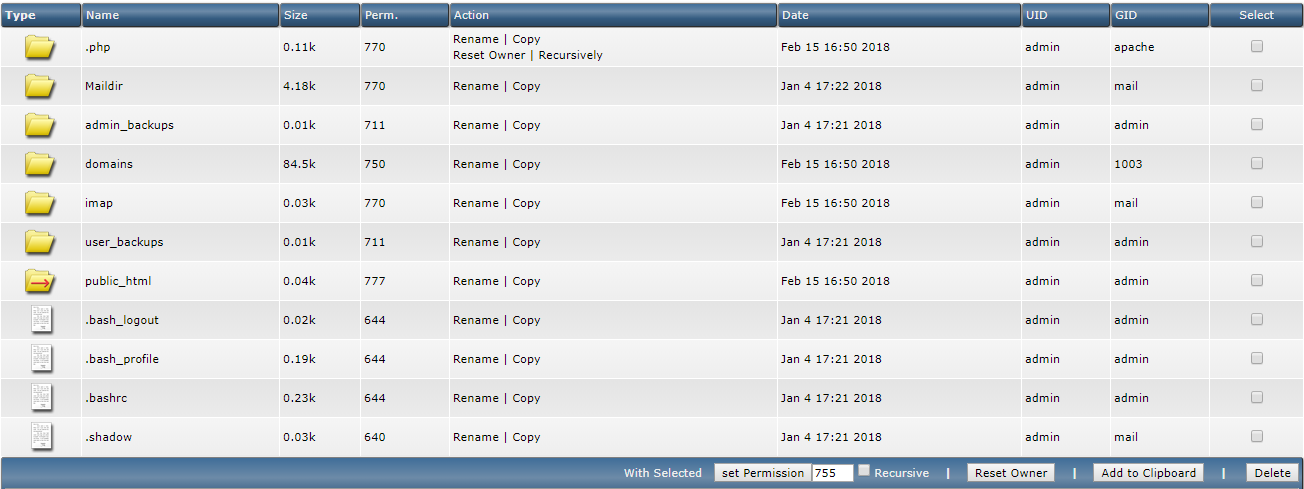
Step 4
Click the name of your domain. In this manual we use supporttest.nl.

Step 5
Click 'public_html'. This is the folder in which your site is placed.

Step 6
Do you want to use a subdomain? Then click the folder with the name of your subdomain. Click 'Upload files to current directory'.
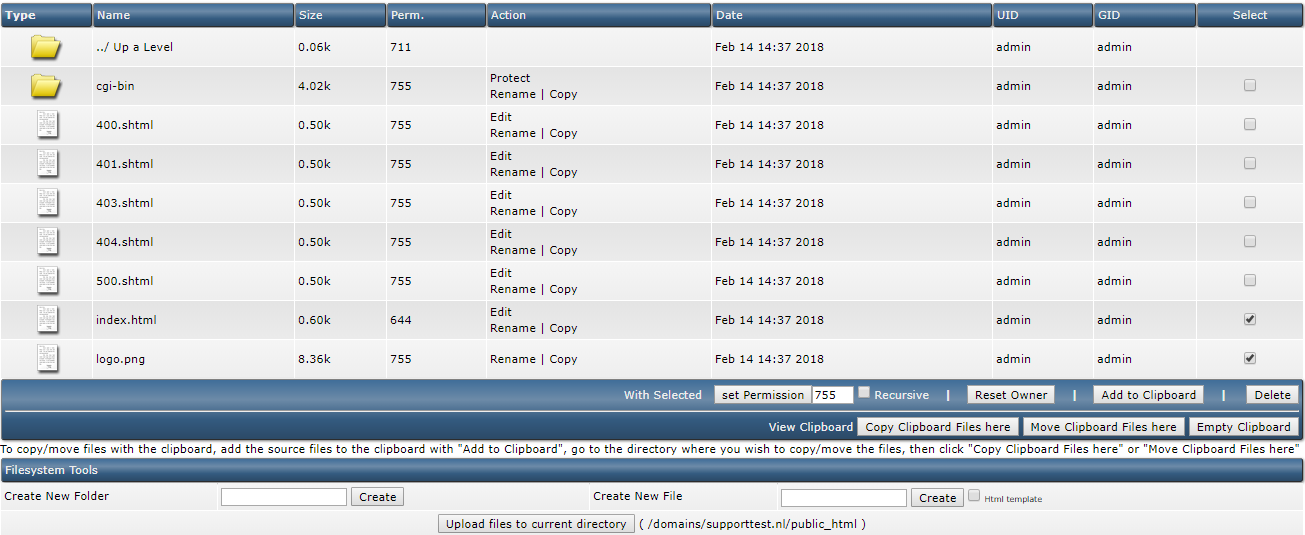
Step 7
Click 'Choose file' and select the file you downloaded in Step 1. Then click 'Upload Files' to upload the file.

Unfortunately, even on an English Windows installation with an English browser and trying to edit the page source, it would not display the options in the screenshot in English (even though it's set as the language for DirectAdmin).
Step 8
Click 'Click here to go back' at the bottom of the confirmation that appears.

Step 9
You will now return to the public_html folder and you will see 'drupal-8.4.5.zip' (or the version that is current at the time of reading). Click 'Extract'.
Step 10
You will see an overview of the content which is going to be unpacked and you can change your folder under 'Directory' (do not do that). Click 'Extract' again to start the unpacking process.
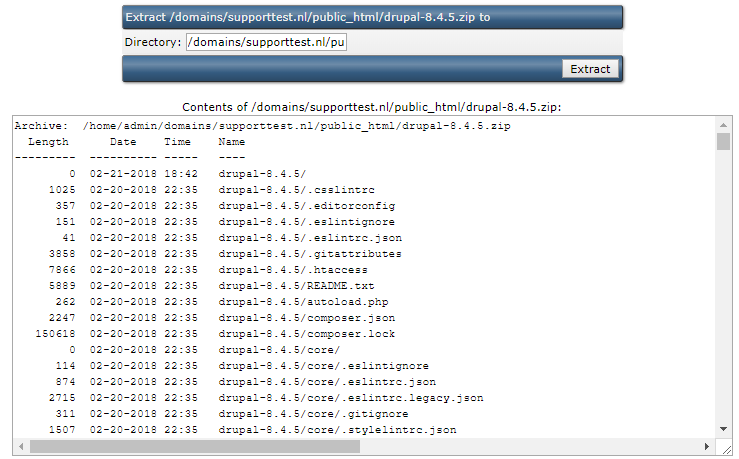
Step 11
Drupal puts its files in the 'drupal-4.8.5' folder in the .zip file you downloaded. As a result, there is a new folder in your public_html folder called "drupal-4.8.5". Click 'drupal-4.8.5' to open the folder.

Step 12
Click 'Select' > 'Add to clipboard' > '../ Up a Level' successively.
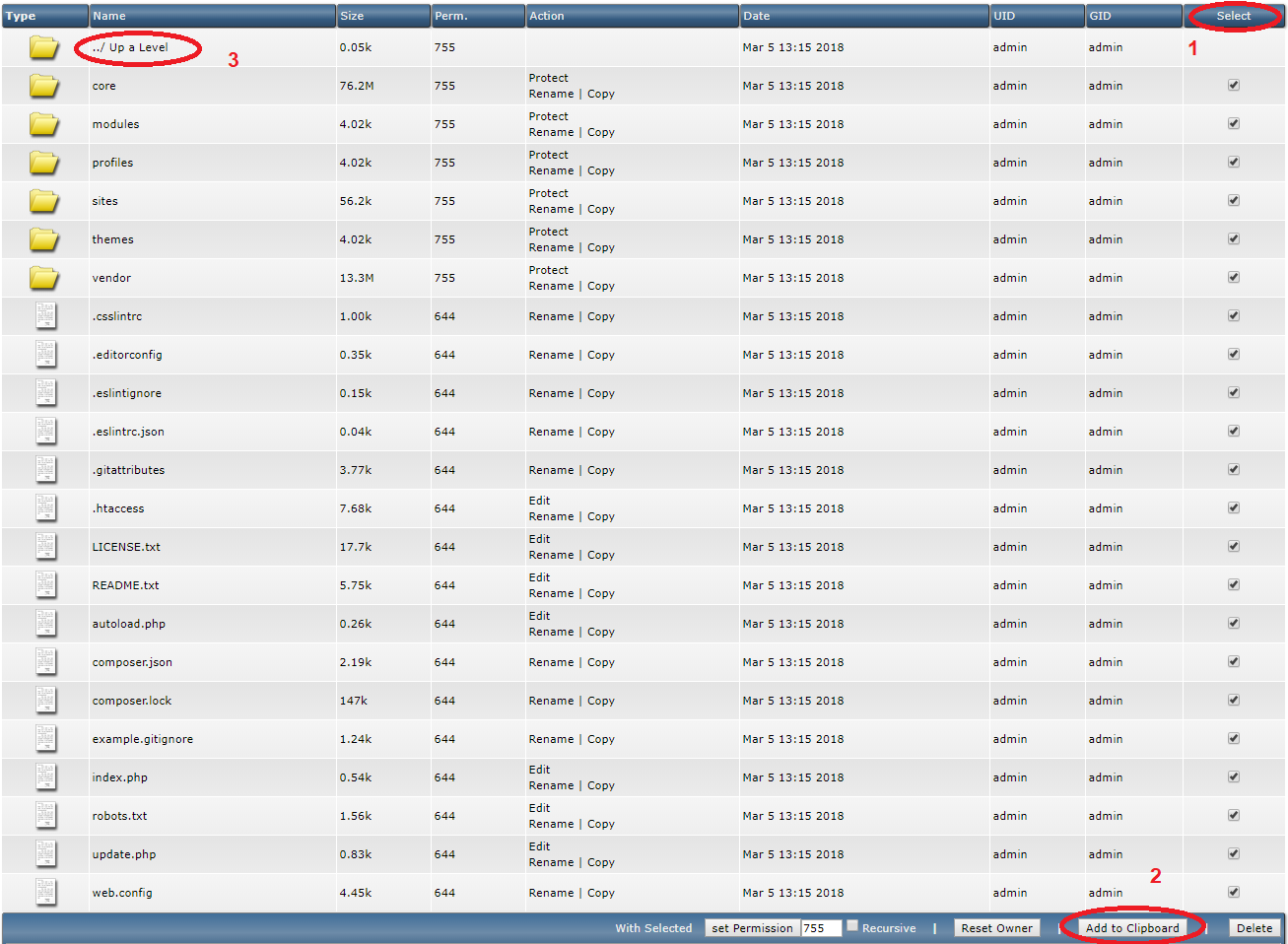
You have now selected all files and folders in the Drupal folder and prepared them to move.
Step 13
Click 'Move Clipboard Files here' at the bottom right.

You will be asked whether existing files may be overwritten. Click 'OK'; without all files, your Drupal site would not work.
Remove the Drupal-4.8.5 folder and the .zip file by checking them and clicking 'Delete'.
Step 14
Open yourdomain.com in a browser (replace yourdomain.com by your actual domain name). You will then see the Joomla setup menu. Select your preferred language and click 'Save and continue'.
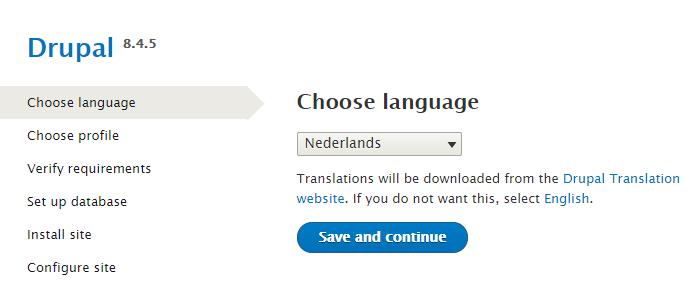
Step 15
You can then choose a 'Standard' or 'Minimal' installation. Choose 'Standard' and click 'Save and continue'.
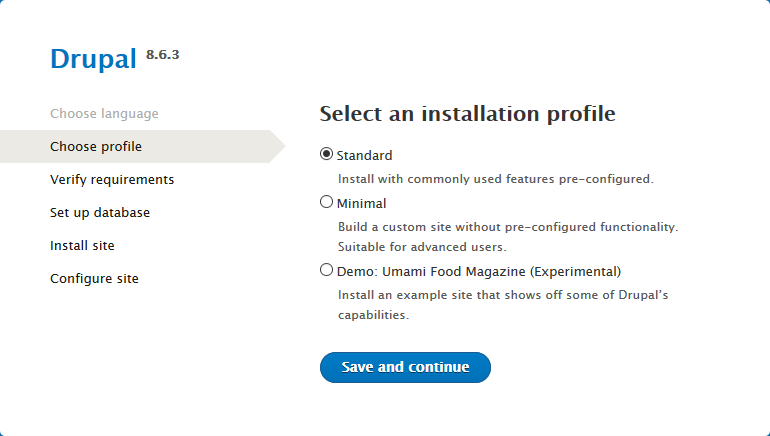
Step 16
Drupal checks whether your VPS meets the requirements for the installation. You will see a warning about OPcache. Click 'continue anyway' at the bottom.
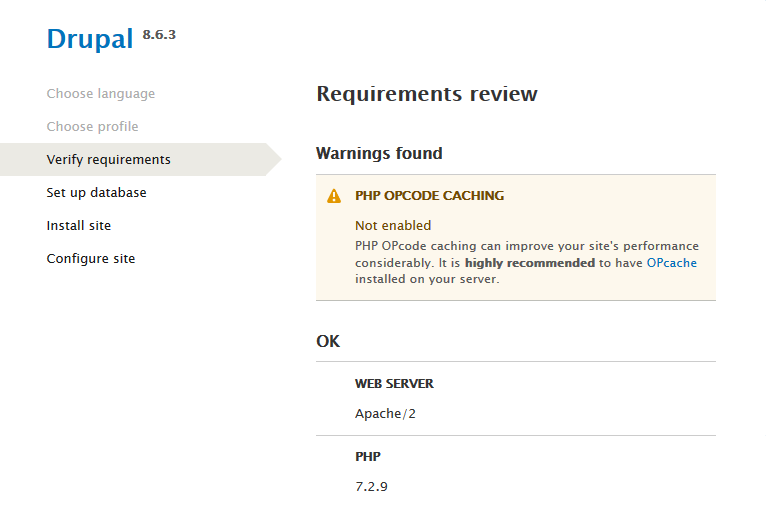
You are free to enable OPcache after the installation, but the configuration of this falls outside the scope of this article.
Step 17
A database is required for this step. In our DirectAdmin tutorial series, we explain how to create a database.
Enter your database as in the example below and click 'Save and continue'.
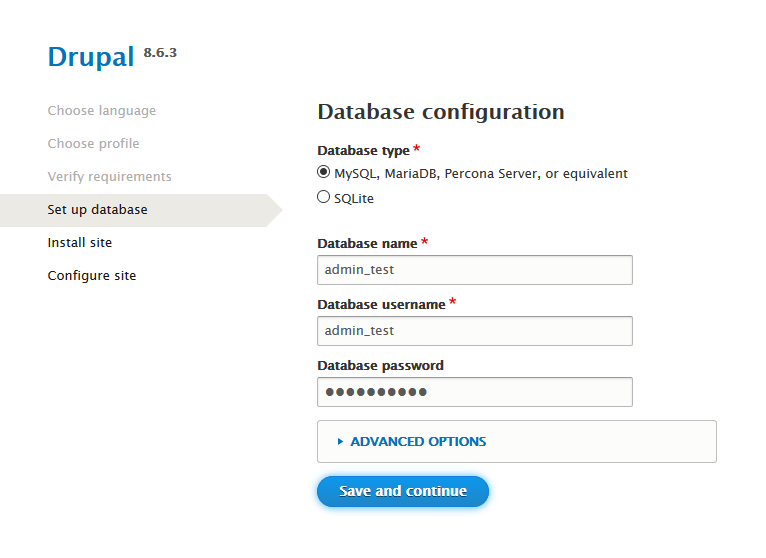
Step 18
Drupal automatically installs your website and automatically proceeds on to thenest step (19) afterward.
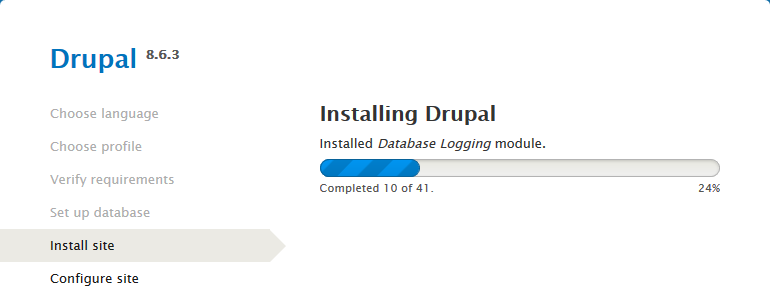
Step 19
Drupal then asks you for the information below. Complete the fields, write down your username and password should you lose them, and click 'Save and continue'.
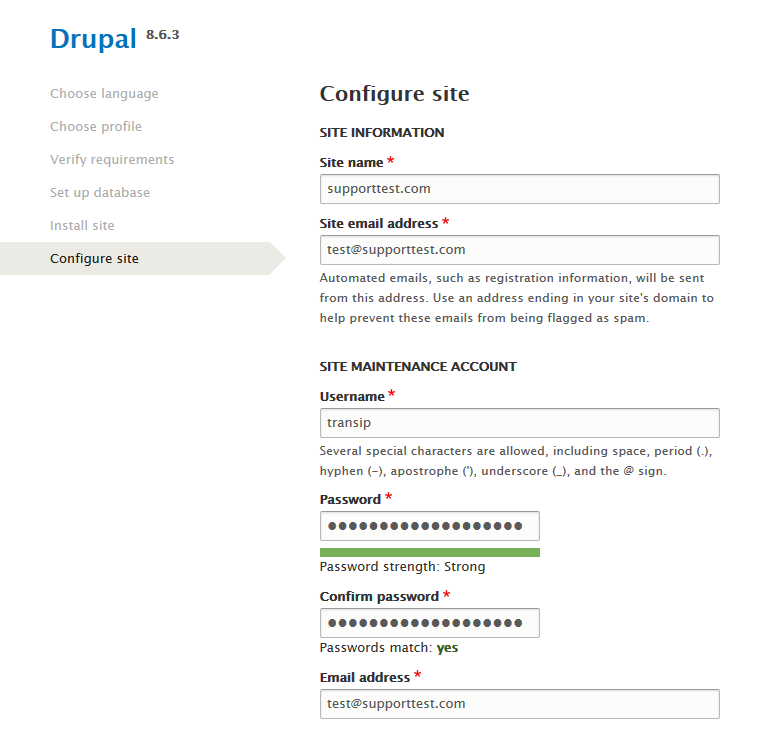
After completing this process, you automatically go to your Drupal site and you can start setting up your site!
Please note that we cannot offer support on the design and management of a Drupal website ourselves.
Should you have any questions left regarding this article, do not hesitate to contact our support department. You can reach them via the ‘Contact Us’ button at the bottom of this page.
If you want to discuss this article with other users, please leave a message under 'Comments'.